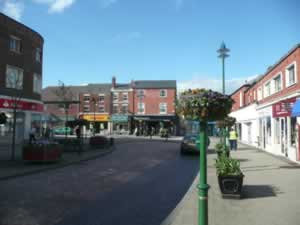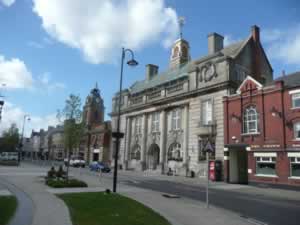Crewe
Crewe is located in the north western English county of Cheshire. It is part of the borough of Crewe and Nantwich. The town itself was originally a small village that was held to be relatively sleepy.

Crewe was originally known as Coppenhall. It is thought that the name Crewe itself was derived from a local Anglo Saxon name that was ultimately used to replace the village’s original name. For many years the main business carried on in the Crewe area was agricultural in nature although engineering concerns would play a pivotal role in the local economy later on. The town is home to the largest oat mill in Europe which dates back to the 17th century.
For many people the thing that they remember about Crewe is the town’s connections with the railway industry - there is a significant rail junction based here which makes the town a transport hub. In the 1830s the Grand Junction Railway built a station and a locomotive works in the village which immediately saw an increase in the size of the village as it started to grow into the town that we know today. It is estimated that this railway work here increased the population of Crewe from under 100 to 40,000 in just a few decades.

The railway company played a major part in planning and financing the infrastructure of the town as it grew. They were, for example, responsible for giving funds to the local church, it established a medical surgery and a health insurance scheme and it helped with the construction and establishment of many local businesses including a cheese market, a clothing factory, a gas works, public baths and a printing works.
The town also has a lot of historical links to the car manufacturing industry. For example, Crewe was the home of Rolls Royce cars until the early 2000s and is still the home of Bentley car production. Rolls Royce built their factory here in the 1930s
Visitors to Crewe may want to visit the Queen’s Park, the land for which was also given to the town of Crewe by the railway company. The Railway Age museum in the town is also worth a visit. The town also holds an annual week long festival. The Englesea Brook museum which is set in a former Sunday School building gives an interesting peek into life as it was lived in the past.
'
Links:
